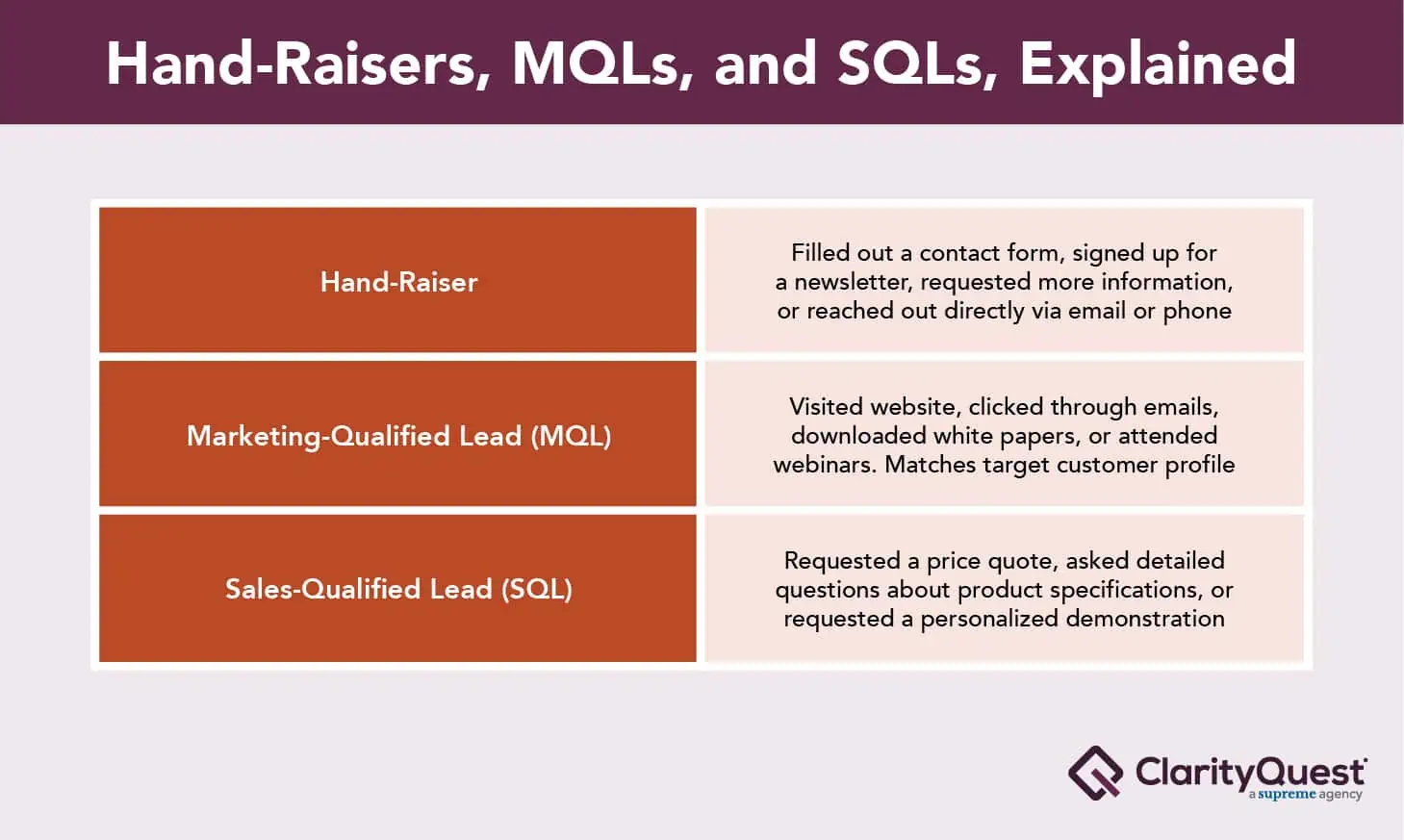When it comes to identifying the B2B leads most likely to convert to a sale, it’s like trying to find a needle in a haystack, except the needle is a potential customer, and the haystack is your CRM filled with thousands of contacts that may or may not be interested in your product or service.
Turning over every top-of-funnel marketing lead to sales is a surefire way for them to tell you your leads suck. The answer? A B2B lead scoring framework.
At first blush, this can seem daunting, but fear not, fellow marketers, start with our lead scoring template. Then, with some input from sales and a whole lot of patience, you can turn this chore into a productive tool to increase sales and show marketing’s ROI to the organization.
B2B lead scoring terminology
Lead scoring terminology, let’s start with the basics.
What is lead scoring? In a nutshell, it’s the process of ranking leads based on their potential value to your business. Think of it as a beauty pageant, but instead of judging contestants on their looks, you rank them on the likelihood that they will convert to paying customers.
From there, it’s crucial that marketing and sales sit down and define the terms being bandied about.
A lead is a lead is a lead … or is it? After embarking on their first lead scoring adventure, it’s common for our clients to find out that their sales team defines a lead differently than the marketing team. Especially if they’re working out of separate systems like HubSpot for marketing and Salesforce for sales. This misunderstanding can quickly lead to tension between sales and marketing, eroding trust in the marketing team’s campaigns and their ability to generate high-quality leads.
Pro-tip: lead scoring will only work if everyone works from the same definitions.
Here are the relevant terms your team should agree on and define (in writing) before moving on:
- Hand-raiser
- Marketing qualified lead (MQL)
- Sales qualified lead (SQL)
You should also start thinking about the transition between these different designations. What’s the marketing-to-sales handoff process and who’s responsible for setting it up in your marketing automation system?
Attribute value to behavior with this lead scoring template
After you know the terms to describe the lead status of individuals in your funnel, it’s time to dive into how you sort them into those predefined categories.
Now we’re getting to the heart and soul of lead scoring. The most valuable lead scoring model considers various factors, including form completions, conference interactions, website activity, email engagement, organizational demographics, and more.
The purpose is to assign a score to all these behaviors, activities, and demographic details so that marketing has a holistic view of the pipeline and can plan outreach campaigns to move them along in the funnel. For example, if there are a lot of top-of-funnel leads designated as hand-raisers, they need middle-of-the-funnel before you send them a demo request that will move them to SQL stage.
Here are five must-dos for marketers:
- Write out all the potential marketing touchpoints and other factors that help answer the question, “what is a good lead.”
- Review relevant information in your CRM about what activities, behavior, and demographics indicate an individual is ready for a sales call.
- Ask sales for feedback on the profile of an individual likely to convert to a deal.
- Work with sales to prioritize the above information and assign each item a numerical score.
- Automate the scores in your marketing automation system … and show a little patience.
Here’s a sample B2B lead scoring template to get you started:
[Instructions: To use the B2B lead scoring template, make a copy of the Google Sheet to save on your drive or download it to Excel.]
Pro-tip: lead scoring is different for every organization. This sample lead scoring framework is a starting point to launch your internal process. Depending on your event schedule, budget for paid advertising, and many other factors, the most effective lead scoring will vary from brand to brand.
Of course, the flip side of being thorough is that you can easily get carried away. Before you know it, you’re spending more time scoring the leads instead of actually following up with them.
I’m a firm believer that perfect is the enemy of good. The only real way to know if you have an effective lead scoring system is to run one and optimize it quarterly. It’s perfectly acceptable to run with a work in progress because some lead scoring is better than none.
Uncover your B2B lead scoring mojo
Now some of you may be thinking, “but lead scoring seems tedious and time-consuming when I’m already so busy.” And let’s face it; it’s not the most glamorous of marketing tasks.
To all of that, I say, “you’re not altogether wrong.”
But—and this is a big one—I’m willing to go on record that the pay-off is worth it to:
- Improve marketing-sales alignment
- Have a holistic view of your marketing funnel, including the number of individuals in each stage
- Demonstrate marketing’s contribution to the pipeline
If you’re struggling to find your lead scoring mojo, our health IT marketing agency can help.
Contact one of the top 200 B2B demand generation agencies today!




